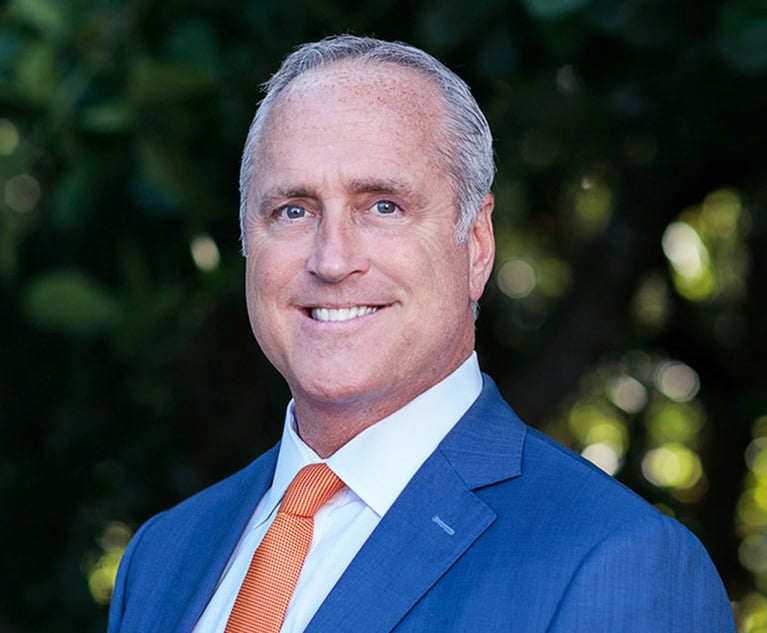2017 Tax Act Changes the Focus of Estate Planning to Saving Income Tax
The 2017 Tax Cuts and Jobs Act temporarily doubles the exemption for individuals dying in 2018 through 2025. In 2026 the exemption will revert to $5 million adjusted for inflation.
February 20, 2018 at 10:45 AM
7 minute read

Traditionally, estate planning to maximize what passes to the next generation after taxes meant planning to reduce the federal estate tax. This was accomplished by reducing the size of a person's estate at death through a variety of planning techniques. However, an estate is subject to estate tax only to the extent the estate exceeds the estate tax exemption. Over the years Congress has been increasing the estate tax exemption. For the years 2011 through 2017, the exemption was increased to $5 million adjusted for inflation, which equated to an exemption of approximately $5.5 million in 2017 after the inflation adjustment. The 2017 Tax Cuts and Jobs Act temporarily doubles the exemption for individuals dying in 2018 through 2025. In 2026 the exemption will revert to $5 million adjusted for inflation. As a result, in 2018 the exemption will be approximately $11 million after the inflation adjustment. In 2026, when the law reverts to the prior rules, the exemption will be $5 million adjusted for inflation, which will probably result in an exemption in excess of $6 million.
In the case of a married couple, each spouse has an exemption. Therefore, in 2018 when the exemption is $11 million, with proper planning a couple would not have an estate tax liability unless their combined estates exceed $22 million because each spouse would have an $11 million exemption. Even after the exemption reverts in 2026 to the prior law, a couple would probably not have an estate tax liability unless their combined estates are more than $12 million, since each spouse will have a $5 million exemption adjusted for inflation, which would likely give each of them an exemption in excess of $6 million, or a combined exemption of $12 million.
Although the estate tax exemption is a changing number, one thing is obvious. A vast majority of the population will not be subject to federal estate tax because their estates will be less than the exemption. In such cases the goal of saving estate tax will become irrelevant and instead the focus will be on saving income tax rather than estate tax.
The reason income tax planning is a factor in estate planning is because Congress has retained the stepped-up basis at death rule. The stepped-up basis rule provides that upon a person's death, the cost basis in the deceased's property for purposes of determining gain or loss upon sale of the property, becomes the fair market value of the property on the date of the decedent's death. However, if the person gifts the property prior to his death, the cost basis of the recipient of the gift is the cost basis of the donor of the gift, which carries over to the recipient. For example, if an individual purchases an asset for $1,000 and dies holding the asset when it is worth $50,000, his heirs can sell the asset for $50,000 without incurring a taxable gain. However, had the person gifted the property prior to his death, and the recipient of the gift then sold the asset for $50,000, the recipient of the gift would incur a taxable gain of $49,000 because he would have taken the property with the donor's cost basis of $1,000 and sold it for $50,000.
In the case of an estate that is not subject to estate tax, which is now a large majority of the estates, giving away appreciated property prior to death results in no estate tax savings because there is no estate tax due in any case, and creates taxable income for the heirs when they sell the property. In such cases the focus will be on planning in order to take advantage of the stepped-up basis at death. To the extent parents want to help their children by making gifts to them, there will be an emphasis on making gifts with high basis assets.
In larger estates the donor will want to use the temporarily doubled exemption during the years 2018 through 2025 before it drops back down to the pre-2018 level. Since the exemption can also be used to make gifts during lifetime, which reduces the exemption available at death to the extent used during life, the donor will want to make gifts, but with gifts there is a carry-over basis rather than a stepped-up basis. In such cases there will be plans to make gifts, and also obtain a stepped-up basis. One example of such a plan might be to make a gift and give an elderly relative with a modest estate a general power of appointment over the gifted property, which will cause the property to be included in the elderly relative's estate at his or her death and stepped-up to the fair market value at the relative's death. This would allow the donor to use the temporarily increased exemption through a gift at a time that the increased exemption is still available, and at the same time obtain a stepped-up basis.
In the cases where an estate plan was implemented to reduce estate tax when the exemption was much lower (in 2002 the estate tax exemption was only $1 million), if the estate is no longer subject to estate tax due to the increased exemption, it may be necessary to reverse the estate plan for income tax purposes. For example, it has become quite common to reduce the value of property for estate tax purposes with family limited partnership. The value of a $1 million asset could be discounted by 30 percent to 40 percent for estate tax purposes if the asset in placed in a family limited partnership, due to valuation discounts. If under the law at the time of the decedent's death, his estate would not be subject to estate tax even without the valuation discount, it would be disadvantageous to value the $1 million asset at, for example, $700,000 with the valuation discount, because the cost basis for income tax purposes would be only $700,000. Therefore, there will be moves to undo such planning so that the asset in the above example could be valued at death at the full $1 million and the heirs would inherit the property with a $1 million stepped-up cost basis rather than at the $700,000 discounted cost basis.
With the increased exemption, it will become even more important to review and revise estate planning documents. For example, a will may provide that the testator gives to his children the portion of his estate that is not subject to estate tax through use of the estate tax exemption, and gives the rest of his estate to his surviving spouse. Since bequests to surviving spouses are not subject to estate tax, this would result in an estate that is not subject to estate tax on the death of the first spouse to die. Such bequests may have produced the desired result when the estate tax exemption was $1 million, but with an $11 million estate tax exemption the result may not comply with the testator's intent. If the estate were $11 million or less at the testator's death, such a plan would leave the entire estate to the children and nothing to the surviving spouse because the entire estate would be sheltered by the estate tax exemption. Such a plan would have to be revised.
These are just some of the issues created by the changes in the tax law. Every individual's case is unique, and should be reviewed with his or her attorney.
Eugene Pollingue is a partner with Saul Ewing Arnstein & Lehr in West Palm Beach office. He focuses on estate planning and asset protection for high net worth clients, probate and income tax planning for commercial transactions.
This content has been archived. It is available through our partners, LexisNexis® and Bloomberg Law.
To view this content, please continue to their sites.
Not a Lexis Subscriber?
Subscribe Now
Not a Bloomberg Law Subscriber?
Subscribe Now
NOT FOR REPRINT
© 2025 ALM Global, LLC, All Rights Reserved. Request academic re-use from www.copyright.com. All other uses, submit a request to [email protected]. For more information visit Asset & Logo Licensing.
You Might Like
View All

Don’t Forget the Owner’s Manual: A Guide to Proving Liability Through Manufacturers’ Warnings and Instructions
5 minute read

Trending Stories
- 1We the People?
- 2New York-Based Skadden Team Joins White & Case Group in Mexico City for Citigroup Demerger
- 3No Two Wildfires Alike: Lawyers Take Different Legal Strategies in California
- 4Poop-Themed Dog Toy OK as Parody, but Still Tarnished Jack Daniel’s Brand, Court Says
- 5Meet the New President of NY's Association of Trial Court Jurists
Who Got The Work
J. Brugh Lower of Gibbons has entered an appearance for industrial equipment supplier Devco Corporation in a pending trademark infringement lawsuit. The suit, accusing the defendant of selling knock-off Graco products, was filed Dec. 18 in New Jersey District Court by Rivkin Radler on behalf of Graco Inc. and Graco Minnesota. The case, assigned to U.S. District Judge Zahid N. Quraishi, is 3:24-cv-11294, Graco Inc. et al v. Devco Corporation.
Who Got The Work
Rebecca Maller-Stein and Kent A. Yalowitz of Arnold & Porter Kaye Scholer have entered their appearances for Hanaco Venture Capital and its executives, Lior Prosor and David Frankel, in a pending securities lawsuit. The action, filed on Dec. 24 in New York Southern District Court by Zell, Aron & Co. on behalf of Goldeneye Advisors, accuses the defendants of negligently and fraudulently managing the plaintiff's $1 million investment. The case, assigned to U.S. District Judge Vernon S. Broderick, is 1:24-cv-09918, Goldeneye Advisors, LLC v. Hanaco Venture Capital, Ltd. et al.
Who Got The Work
Attorneys from A&O Shearman has stepped in as defense counsel for Toronto-Dominion Bank and other defendants in a pending securities class action. The suit, filed Dec. 11 in New York Southern District Court by Bleichmar Fonti & Auld, accuses the defendants of concealing the bank's 'pervasive' deficiencies in regards to its compliance with the Bank Secrecy Act and the quality of its anti-money laundering controls. The case, assigned to U.S. District Judge Arun Subramanian, is 1:24-cv-09445, Gonzalez v. The Toronto-Dominion Bank et al.
Who Got The Work
Crown Castle International, a Pennsylvania company providing shared communications infrastructure, has turned to Luke D. Wolf of Gordon Rees Scully Mansukhani to fend off a pending breach-of-contract lawsuit. The court action, filed Nov. 25 in Michigan Eastern District Court by Hooper Hathaway PC on behalf of The Town Residences LLC, accuses Crown Castle of failing to transfer approximately $30,000 in utility payments from T-Mobile in breach of a roof-top lease and assignment agreement. The case, assigned to U.S. District Judge Susan K. Declercq, is 2:24-cv-13131, The Town Residences LLC v. T-Mobile US, Inc. et al.
Who Got The Work
Wilfred P. Coronato and Daniel M. Schwartz of McCarter & English have stepped in as defense counsel to Electrolux Home Products Inc. in a pending product liability lawsuit. The court action, filed Nov. 26 in New York Eastern District Court by Poulos Lopiccolo PC and Nagel Rice LLP on behalf of David Stern, alleges that the defendant's refrigerators’ drawers and shelving repeatedly break and fall apart within months after purchase. The case, assigned to U.S. District Judge Joan M. Azrack, is 2:24-cv-08204, Stern v. Electrolux Home Products, Inc.
Featured Firms
Law Offices of Gary Martin Hays & Associates, P.C.
(470) 294-1674
Law Offices of Mark E. Salomone
(857) 444-6468
Smith & Hassler
(713) 739-1250






